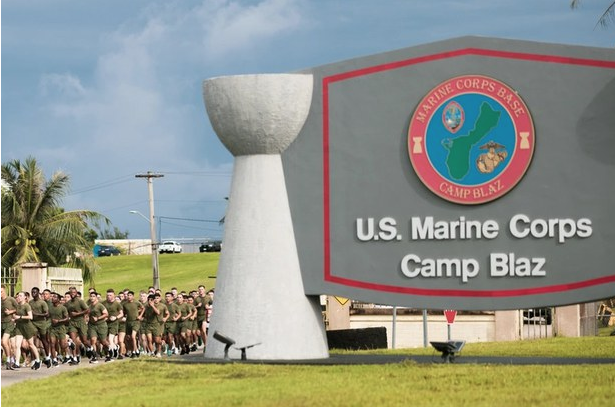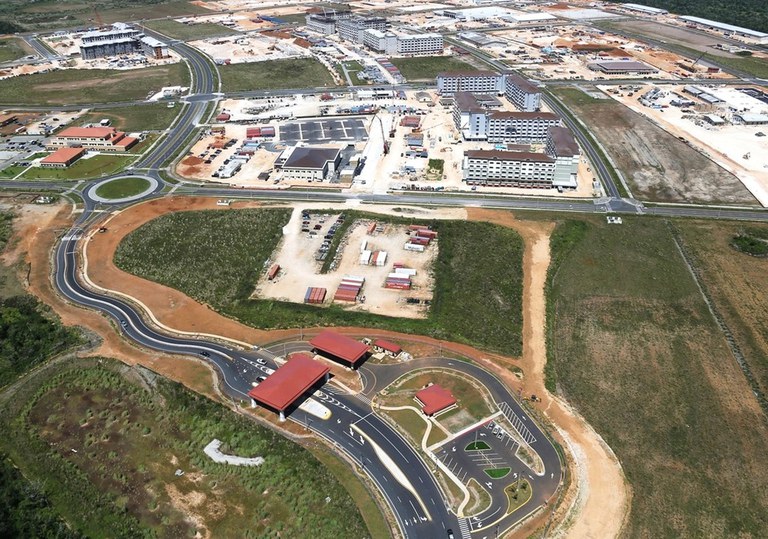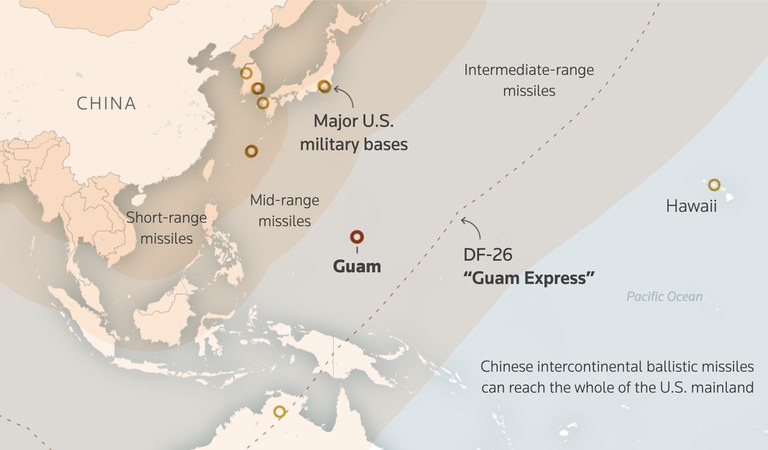
By Mar-Vic Cagurangan in Hagatna, Guam
The United States is advancing the fortification of its territory closest to China with the arrival of the first Marines from Okinawa and its first interceptor missile test in Guam last week.
About 100 Marines from Japan landed on Saturday, the vanguard of about 5000 due to be relocated to Guam under a security treaty with the US.
The US successfully downed one of its own unarmed ballistic missiles last Tuesday in what will be a regular occurrence in the territory over the next decade.
The milestones come as the House of Representatives last week also passed the 2025 National Defence Authorisation Act — with more than US$2 billion in spending for Guam — that now goes to the Senate for approval.
Nicknamed the “tip of the spear” due to its proximity to China, Guam is considered a potential target in any conflict between the two nations. The island has no bomb shelters and the unprecedented military build-up continues to divide residents.
“The intensity of the build-up is overwhelming for citizens and public agencies trying to keep track and respond to military plans as they unfold,” said Robert Underwood, chairman of the Guam-based Pacific Centre for Island Security.
“A master plan is needed for understanding by all concerned. One must exist and we are not privy to it,” he told BenarNews.
Lays the groundwork
The arrival of the first troops lays the groundwork for preparing Marine Corps Base Camp Blaz to receive thousands more.
“Relocations will take place in a phased approach, and no unit headquarters will be moving during this iteration,” a US Marine Corps press release said on Saturday.

“Forward presence and routine engagement with allies and partners are essential to the United States’ ability to deter attempts to change the status quo by force or coercion and respond to crises in the region, to include providing humanitarian assistance and disaster relief when necessary,” the USMC said.
Japan will pay US$2.8 billion to fund some of the infrastructure projects on Naval Base Guam, Andersen Air Force Base and Camp Blaz.

The Missile Defence Agency last Tuesday tested its Aegis system, firing off an interceptor from Andersen Air Force to down an unarmed, medium-range ballistic missile more than 200 nautical miles north-east of Guam.
“The event marked a pivotal step taken in the defence of Guam and provides critical support to the overall concept for the future Guam defence system,” deputy Pentagon press secretary Sabrina Singh said in a press briefing last Wednesday.
The launch was the first in a series of twice-yearly missile defence tests on Guam over the next 10 years.
16 sites planned
The US Indo-Pacific Command plans to build a missile defence system with 16 sites, touted to provide 360-degree protection for Guam.
The urgency was highlighted after China conducted a rare ballistic missile test with a dummy warhead in September. Its flight path crossed near Guam, Federated States of Micronesia and Marshall Islands before falling into the ocean in the vicinity of Kiribati.

In July, US military officials had announced that the first missile defence test was set to take place in Guam “by the end of the year,” but did not provide the exact date.
Nanette Reyes-Senior, a resident of Maina village, said she was “extremely surprised” that the MDA launched the flight test “without prior notice to the public — unless there was notice that I missed.”
Underwood has called for greater transparency about the missile defence of Guam.
“The missile testing had already been announced . . . but no specific week, let alone date was announced,” Underwood said.
With more tests to be launched in the coming years, Underwood said: “The general public should be given advanced notice and especially land owners.”
No significant impact
After public consultation earlier this year, the Missile Defence Agency decided the planned tests would not significantly impact humans or the natural environment.
President of the Pacific Association of Radiation Survivors Robert Celestial welcomed the US missile defense test.
“China had 23000 ballistic missiles, numerous ICBM missiles and 320 nuclear warheads. It is evident that we are preparing for war, so we should at least prepare to protect the civilian population from a nuclear attack,” he told BenarNews.
“Growing up in the 1960s we had duck-and-cover drills. I feel better prepared now than [to] suffer later.”
Guam is no stranger to war, being part of the Pacific campaign during World War II.
Taiwanese President Lai Ching-te’s visit to Guam earlier this month to strengthen ties has raised residents’ fears of the territory being further targeted in escalating tensions between Washington and Beijing.
Shelly Vargas-Calvo, a senator-elect who will assume her seat in the Guam legislature next month, said the growing tensions in the region will take Guam into the path of war.
“I applaud the successful test launch,” she said. “It is imperative to show power and capability despite having a small footprint in the region to send a message that we and our allies are not to be messed around with.”
Republished from BenarNews with permission.











































